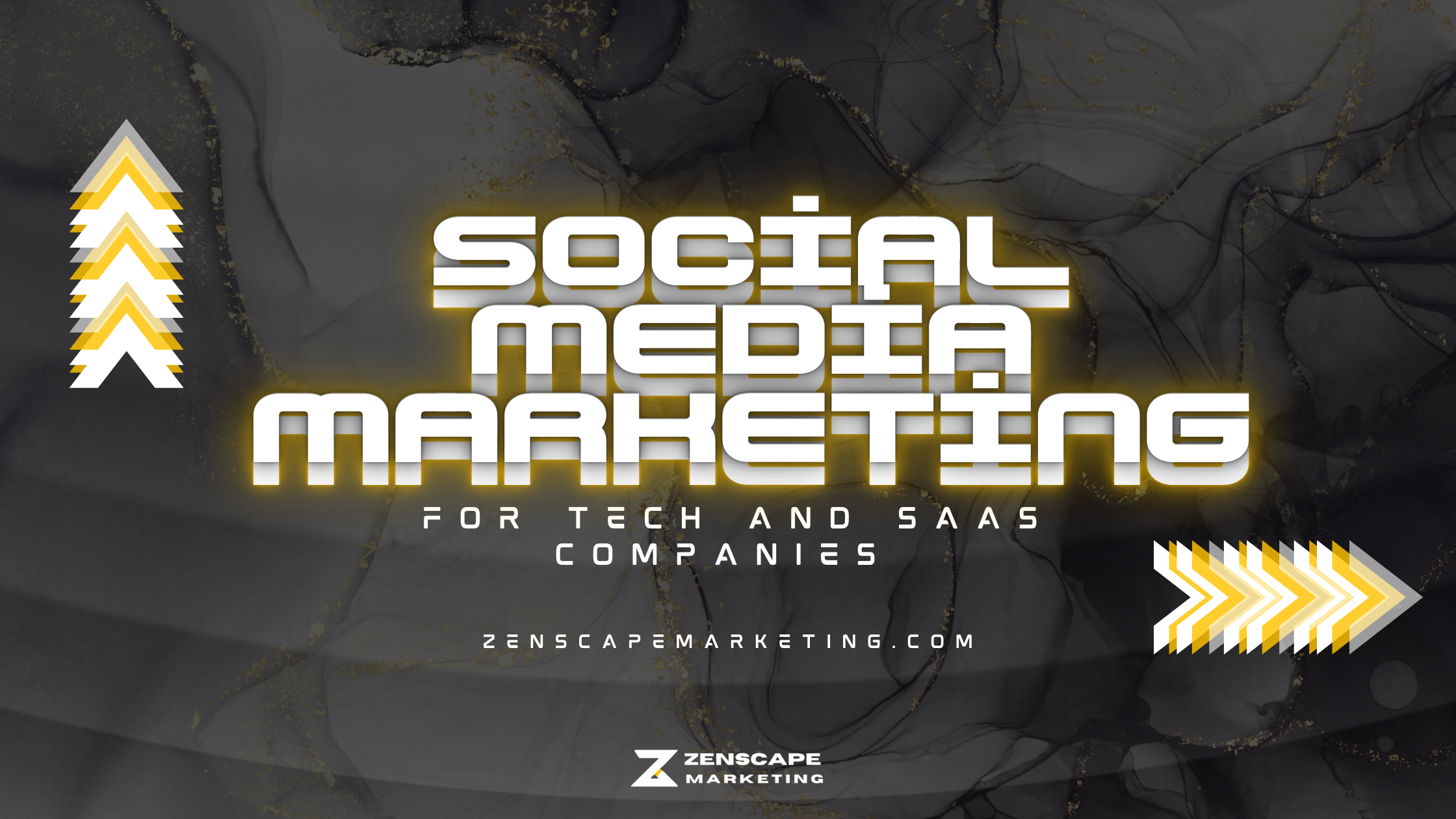In the rapidly evolving, fiercely competitive Tech and SaaS sectors, standing out from the crowd can often seem impossible. However, a potent tool exists within the grasp of these companies that can help them slice through the static, reach their target audience, and forge meaningful, lasting connections: social media marketing. This article serves as a comprehensive guide on harnessing the power of Social Media Marketing for tech and SaaS companies, offering in-depth insights into the strategies and tactics that underpin success in this crucial sphere.
Why Social Media Marketing Matters for Tech and SaaS
Social media marketing is far from another fleeting buzzword in a sea of digital jargon. For tech and SaaS companies, it serves as a vital lifeline to their audience. It’s a dynamic, interactive platform that empowers businesses to showcase their unique products, engage in meaningful dialogue with their audience, and build strong brand loyalty that can weather any storm.
Take Slack, for instance. This innovative communication platform has astutely utilized Twitter to provide real-time support, share essential updates, and interact with users personally. Through a carefully curated mix of informative content and humanized communication, they’ve constructed a robust online presence that profoundly resonates with their audience and cultivates a sense of community.
Understanding Your Audience
In the diverse, ever-shifting world of social media marketing, gaining a deep understanding of your target audience is paramount. Knowing precisely what kind of content your audience values, their online behavior, and the pain points they face can help you tailor your social media strategy for maximum impact.
Luckily, tools like Google Analytics provide invaluable insights into your audience. For example, you can use the Audience Overview report to see key demographic data like age, gender, location, and interests. The Acquisition reports show traffic sources and social media channels driving visits. The behavior reports highlight pages visited, engagement metrics, and conversion funnels. These data points can inform your content strategy, ensuring that your social posts cut through the noise, resonate with your audience, and inspire them to take action. Funneling social traffic from appropriate platforms into Analytics and regularly analyzing the reports is crucial.
Choosing the Right Social Media Platforms
Choosing the right social platforms is crucial for tech/SaaS marketing success. Focus on strategically leveraging Google, YouTube, Facebook, Instagram, and LinkedIn.
Google and YouTube should be utilized to boost visibility. Optimize social profiles and titles/descriptions to improve SEO and SERP presence. YouTube specifically enables video demonstrations to engage and inform audiences.
For mainstream consumer reach, leverage Facebook and Instagram. Facebook’s expansive user base allows connecting through ads, Groups, and Live video. Instagram engages younger demographics via visual Stories, Reels, and shoppable posts.
For targeted B2B marketing, utilize LinkedIn’s capabilities. Sponsored content appears seamlessly in the LinkedIn feed to promote thought leadership. Targeted text and sponsored InMail ads enable generating and nurturing leads.
Evaluate each platform’s audience, strengths, and marketing options to determine fit. An omnichannel presence across selected venues is optimal. Focus on tailoring tactics to leverage Google/YouTube for SEO and video, Facebook/Instagram for consumer awareness and engagement, and LinkedIn for professional lead generation.
Creating Engaging Content
At the heart of social media marketing is consistently creating engaging, valuable content. For tech and SaaS companies, this means crafting social posts and campaigns that effectively showcase their innovative products while educating their audience. The goal is to provide followers with constructive, actionable insights, tips, and solutions related to the problems the brand solves.
Consider Adobe’s strategy on its Instagram account for inspiration on diversified content approaches that engage. They incorporate a broad mix of user-generated content from customers showcasing how they creatively use Adobe products. This makes followers feel included and heard. Adobe also provides mini-tutorial videos and posts that teach new skills and techniques step-by-step. This diverse and thoughtful mix of content types keeps the audience engaged, always building anticipation for what Adobe will post next.
Other tech brands like Mailchimp use humor and behind-the-scenes perspectives to craft unique content. Testing various content styles and seeing what resonates can help refine an engaging social media mix. The key is providing ongoing value tailored to your audience. This brings us to our next critical component of social media marketing – leveraging paid advertising to amplify results. Let’s explore proven paid social tactics for tech and SaaS brands looking to accelerate awareness, engagement, and conversions through Facebook, Instagram, and LinkedIn.
Leveraging Paid Social Media Advertising
As a tech or SaaS company, you may wonder how to leverage paid social media advertising to promote your business and generate more leads.
In this answer, we’ll review the various options available for paid advertising on different social media platforms, discuss the benefits of these ads for tech and SaaS companies, and provide tips on creating effective social media ads.
First of all, let’s take a look at the different ad formats available across various platforms:
- Facebook:
Six types of Facebook Ads allow you to reach users based on their interests, demographics (e.g., age, gender), location (e.g., country/region), behaviors (e.g., online shoppers), and connections (e.g., friends or family members who like your page).
These ad formats include photos & videos, carousels, stories, collections, instant experiences, lead forms & polls/surveys, and marketplace listings. They all have unique features to maximize audience engagement and drive action from them.
- YouTube:
YouTube ads come in several formats, like video discovery ads, non-skippable in-stream ads, bumper ads, and outbound/site link ads. You can target viewers by demographics, interests, remarketing, placements, topics, keywords, and more.
Key options are TrueView for reach and action to optimize awareness and conversions. YouTube also provides robust analytics on viewership, clicks, CTR, and ROI.
- Linkedin:
LinkedIn Ads offer two main types – sponsored content ads integrated into news feed items & text ads, which appear in column space between profile & search results pages.
Both allow you to target specific user profiles with particular job titles or industry roles while leveraging relevant visuals and metrics related to impressions & click-through rates, etcetera. You can also decide whether to charge per impression or cost per click to better estimate returns on investment via this platform.
- Instagram:
Last but not least comes Instagram, featuring its potential advertisement offerings covering photos, videos, story ads, live streaming dynamic product carousels, canvas, etcetera.
These are ideally suited if you want maximum visibility from mobile users through visual storytelling mechanisms supported by more detailed data analytics delivered alongside each campaign.
While organic content nurtures audiences, paid ads actively acquire new customers at scale. For startups and brands launching products, paid social provides a high-impact amplifier to accelerate awareness, engagement, and conversions efficiently. The precision targeting capabilities also enable reaching niche B2B and tech-savvy consumers effectively. In short, paid social optimizes ad spend and ROI. Next, we’ll explore the top advantages of investing in paid social for tech company marketing.
Benefits of paid social media ads for tech and SaaS companies:
Now, let us explore the significant benefits of engaging paid advertisements across leading social networks – especially for technology products like SaaS applications.
To start, improved brand recognition can be achieved by investing in sustained promotion efforts directed simultaneously across these interconnected digital channels. This results in greater awareness among potential customers regarding your organization’s offerings.
Moreover, social media interactions on platforms such as YouTube and Instagram further gather valuable consumer insights while helping fine-tune customized ad messaging strategies aimed at audiences more inclined towards certain services a business provides.
Regarding outcome maximization, most successful social media campaigns on networks like Facebook and LinkedIn deliver impressive ROI due to being specifically tuned, consistently tracked, and tweaked – but only after considering other key performance indicators like completion rates, conversions, and more.
The result is an expanded customer base among whom goodwill remains on channels such as YouTube and Instagram, even if unsubscribed, contributing to the company’s reputation over time.
In summary, when executed strategically, paid social ads across leading platforms like Facebook, YouTube, LinkedIn, and Instagram can profoundly amplify a tech/SaaS brand’s growth. Multi-channel paid promotions expand engagement across the most relevant platforms simultaneously. Closely analyzing the performance data insights gained from each platform is critical for optimization. Assessing and fine-tuning efforts based on these insights multiplies the benefits by revealing how to improve future social impact and ROI.
Measuring Success: Key Metrics and Tools
To ensure the effectiveness of your social media marketing efforts, it’s critical to measure success through key performance metrics.
Engagement rate, which tracks user interactions like clicks, comments, shares, and follows, provides essential insights. Analyzing engagement rates over time and across different platforms and content types can spotlight what resonates most with your audience to refine strategies. You can also set engagement rate goals to evaluate campaign performance.
Click-through rate is another vital indicator, revealing how compelling your content and creWe’rety are. CTR measures clicks on links or ads compared to impressions. Optimizing elements like phrasing and visuals to improve CTR can amplify results. Examining CTR by platform and audience is prudent.
And conversion rate is crucial for assessing ROI. This metric tracks how many social engagements convert into desired actions, like purchases or lead form sign-ups. Monitoring conversion rates helps identify strengths to leverage and weaknesses to improve. Set conversion rate benchmarks to evaluate performance.
Regularly analyzing your engagement, click-through, and conversion rates across multiple dimensions gives you the actionable insights needed to fine-tune and elevate your social media marketing strategies continually. Comparing performance by platform, content type, audience segment, and campaign provides a multidimensional perspective. This comprehensive approach to monitoring key metrics, among others, enables you to deeply understand what resonates, what misfires, and how to continually optimize efforts for improved reach, response, and ROI. With the proper measurement discipline, you gain the visibility required to prove success and strategically boost impact over time.
Embrace Evolved Social Media Marketing
In conclusion, effective social media marketing for tech and SaaS companies involves profoundly understanding your audience, strategically selecting the right platforms, creating engaging content, leveraging paid advertising, and diligently measuring success. By implementing these strategies, tech and SaaS companies can build a robust social media presence that drives growth and success.
Are you ready to revolutionize your social media marketing strategy? Contact us at Zenscape Marketing today, and let’s transform your social media platforms into powerful marketing tools that fuel your business growth. We’re committed to helping you navigate the dynamic digital landscape, unlocking the full potential of social media to drive your business forward.


